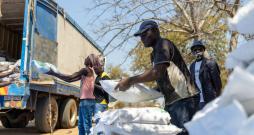Farmers helping farmers in Cambodia
In rural Cambodia, MCC-supported agricultural cooperatives give farmers new ways to work together to grow and earn more.
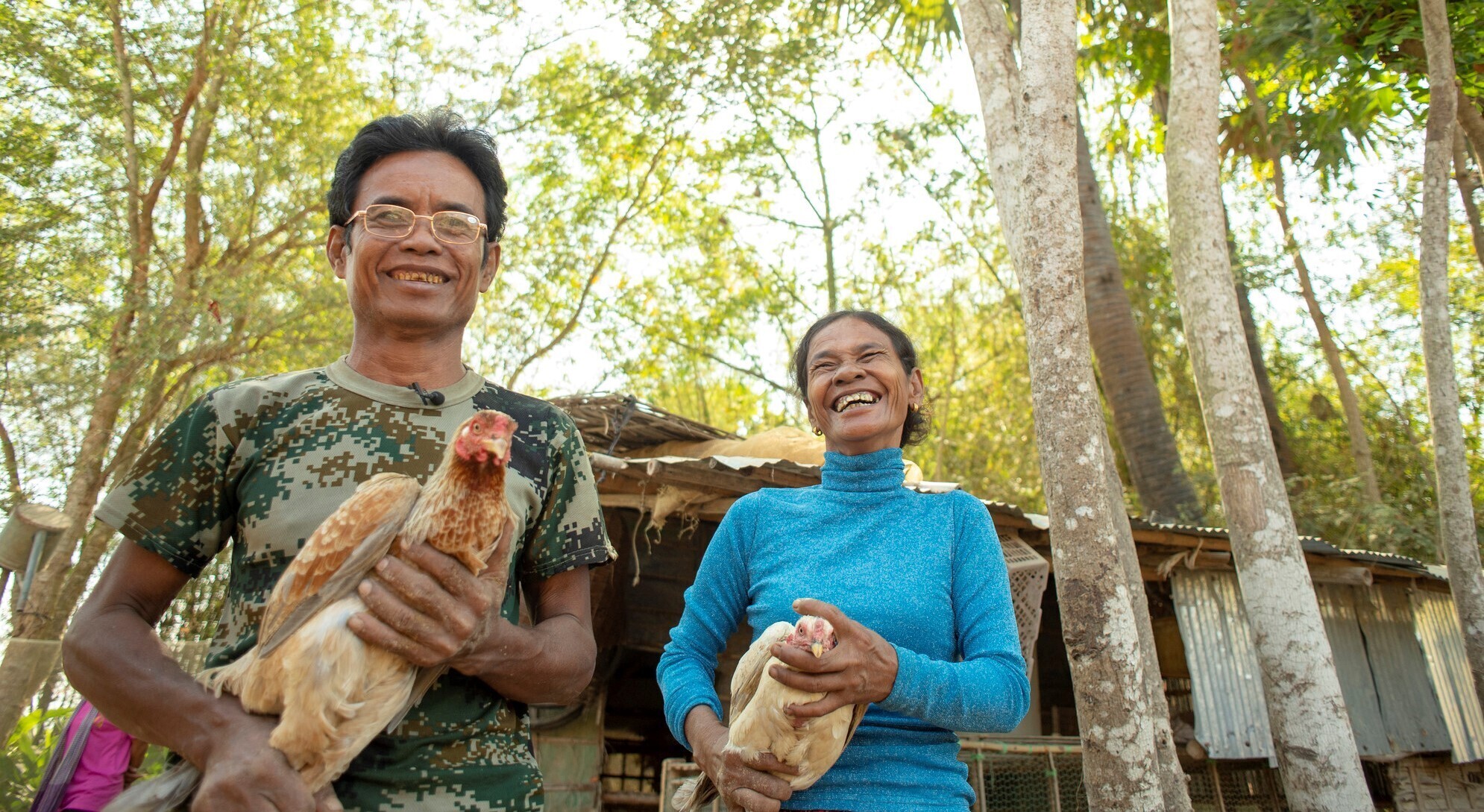
With a practiced rhythm, Chun Sokun swings a net behind his shoulder, rocks forward and heaves the brown cords across his pond’s green water. As soon as the net settles, he pulls it in, hand over hand.

Silver carp and catfish flop against each other as his granddaughter and wife inspect his catch. He can sell five or six of the bigger fish, or eight or nine of the smaller ones, to his neighbors or at market for about 10,000 riel ($2.50).
Those few dollars are significant. Chun*, a rural Cambodian farmer, for years has struggled to provide for his family with rice and vegetable harvests, periodic construction jobs and music gigs.
In the dry season in the rural districts of Mesang and Kampong Trabaek in Prey Veng Province, Cambodia, work dries up, just like the wells and the rice fields.
Many people migrate to find work — including nearly 50 percent of the young adults in these two districts. Chun’s two adult children have gone to Thailand, one leaving a granddaughter behind for Chun and his wife, Soa Samin, to raise.
Others stay at home, trying to make ends meet. Many go hungry, with the most impoverished eating a diet primarily of rice rationed to last until the next harvest.
But farmer-led agricultural cooperatives, formed through MCC partner Organization to Develop our Villages (ODOV), are giving Chun, Soa and their neighbors new ways to earn income from their land and to support each other.
ODOV, with funding from MCC’s account at the Canadian Foodgrains Bank, is investing in seven farmer-led cooperatives, which include more than 3,000 families in Mesang and Kampong Trabaek.

With these funds, cooperatives make no-interest loans available to farmers who want to build fishponds, improve and fill their chicken coops and enlarge and protect their gardens. Loans for other farming resources, such as animal food and vaccinations, construction materials and fuel, are paid back at a low interest rate.
By buying in bulk, cooperatives make supplies like fencing available to farmers for below-market prices. Farmers invest in the cooperatives by purchasing shares, which adds to the capital the cooperatives can loan. ODOV also provides administrative training to cooperative leaders and group training and individual mentoring to help farmers improve their yield.
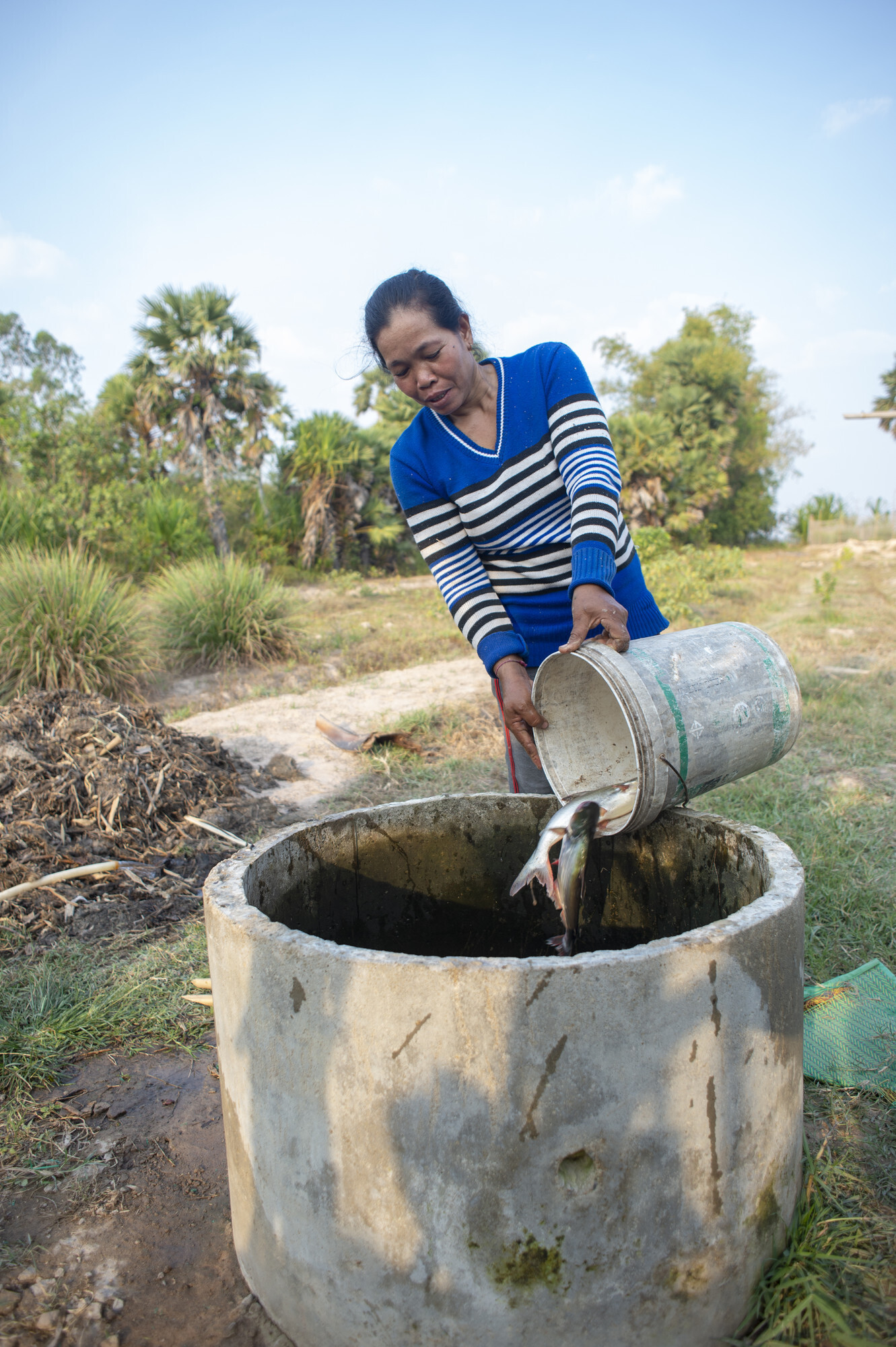
The result the cooperatives hope for is what Chun and Soa are experiencing.
In addition to new income from fish, water from the fishpond nourishes the garden, as does the natural fertilizer ODOV field staff taught them to make. Chun and Soa now grow green beans, cucumbers, amaranth, morning glory (a nutritious green vegetable), pumpkin and more, selling and eating vegetables even when the rice fields are brown.
Chun learned from ODOV field staff how big and deep to make his pond, so it won’t run out of water. Following their direction, he terraced the pond and put in lemon grass to limit erosion. He planted vegetation and trees that eventually will provide shade to slow evaporation and protect the fish. “Having lots of fish helps me grow financially and have more money for my family,” Chun says.
Having lots of fish helps me grow financially and have more money for my family."
Chun Sokun
He uses the money to buy food and clothes, attend traditional ceremonies, send his granddaughter to school and pay off his loan.
Hour Sreypov, who is now president of Prey Chhou agricultural cooperative, was first impressed by the knowledge of the ODOV field agent who taught her how to keep her chickens healthy and producing more often. She joined ODOV’s field visits to see other successful farmers, who inspired her to look for new ways to make money.
“For example, at my house I have a small grocery store,” she says. “There’s a middleman who comes right to my place. I thought, now what if I become a chicken middleman while I am here? At least I could earn some income — $2.50 or $3 per day on top of my grocery salary. How about that?”
Soon she began to pick up chickens at people’s houses and most recently from chicken producer groups.
On a March morning, Hour gets off her motorcycle in a dirt driveway, meeting a half dozen women, each with a group of chickens. As part of a chicken producer group established by their agricultural cooperative, women bargain and sell together to assure that they get fair prices and access to expanded markets. Hour examines and weighs the birds, paying each woman in cash.
Chim Thoeun, who earned about $14 for her three chickens on this day, used to have to go to a main road and wait for a middleman to come to pay her a little less for her chickens. Now she can work at home until Hour arrives.
And working together with neighbors has improved their relationships, she says. “I get to sell chickens with them and, by spending time with them, it made me closer with them. Before, when we would go to sell the chickens, we would compete. Who goes first? Who goes later?”
Loans from his local cooperative gave Pol Thida and his wife Sok Sovan in nearby Tbeng village a way to get into the chicken business.
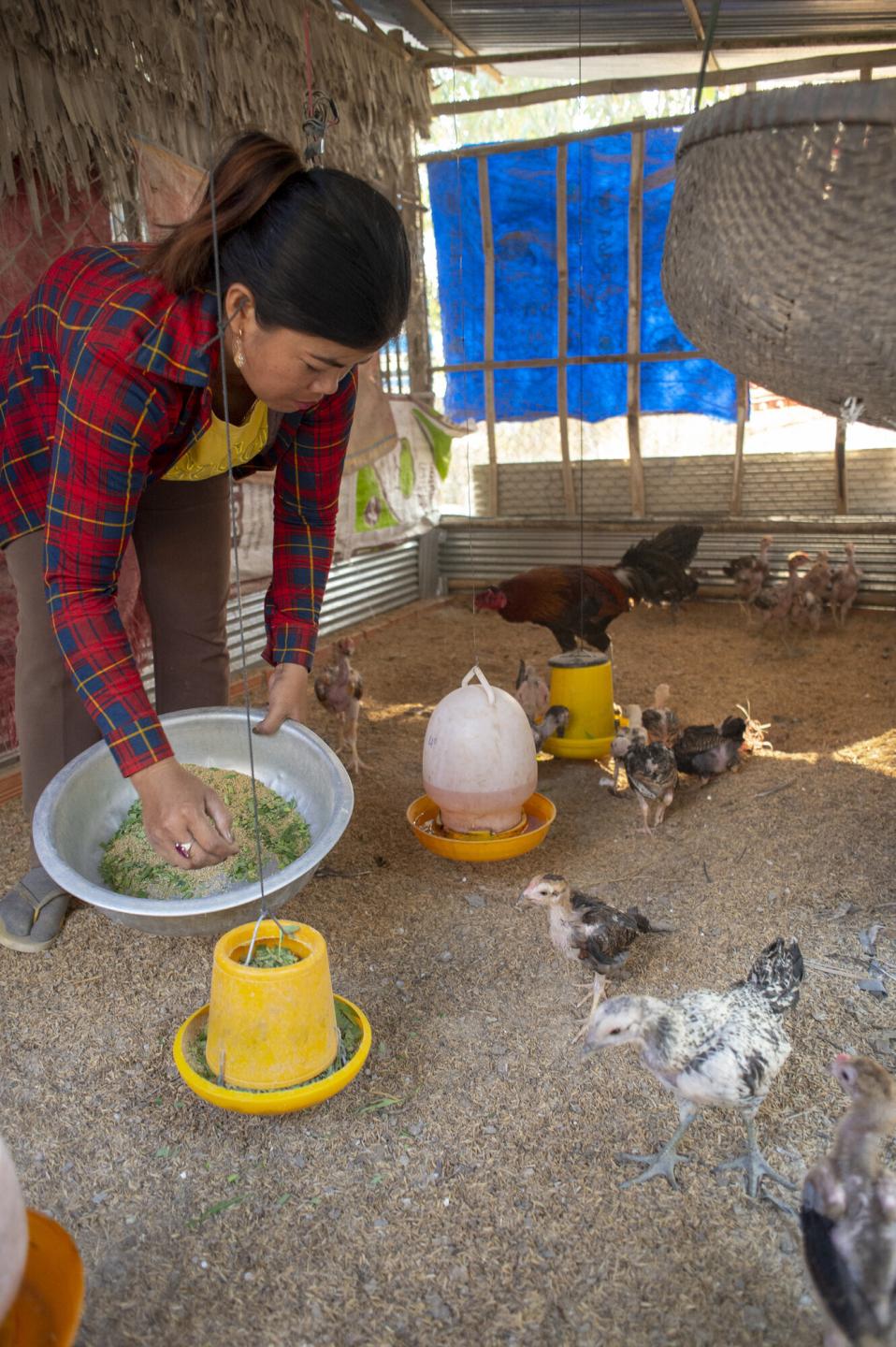
“Without the agricultural cooperative, I probably would start buying chickens by myself, for example, by buying one or two chicks at a time — little by little,” Pol says.
Instead, the family has raised and sold 100 chicks and used some of the profit to buy 120 more chicks.
Getting a loan from a bank with a high interest rate would be too expensive, he says, and only the bank profits. When he pays interest to the cooperative, farmers also benefit because the cooperative gives a portion of its profit as dividends to its members at the end of the year.
“If I get a loan in the future, I plan to have a fishpond,” Pol says. “The water from the fishpond will supply my vegetable garden. Then I can grow vegetables to feed the chickens as well. It can become a cycle.”
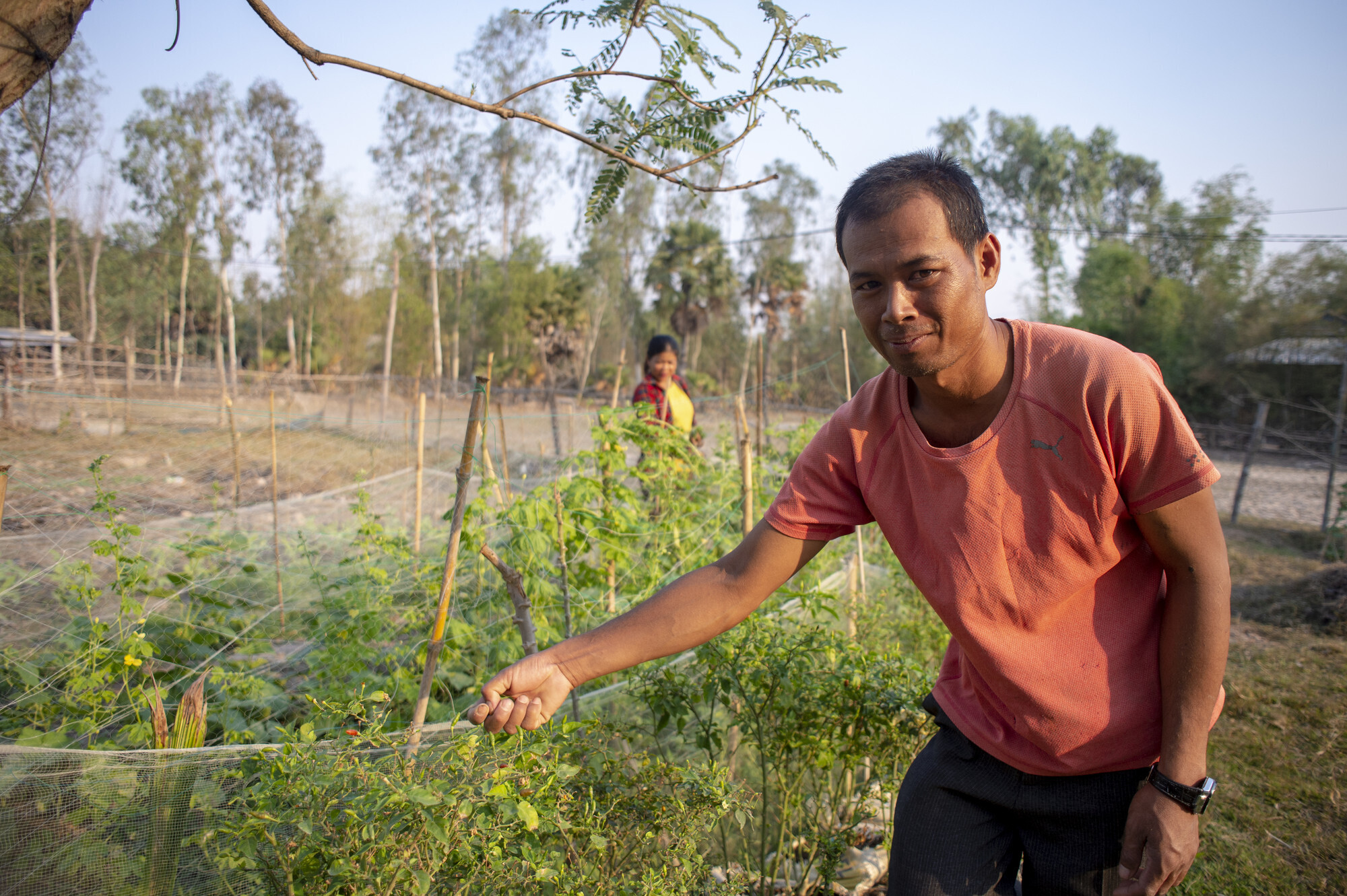
That’s exactly what Chim Yean and his wife Reach Koeun do. Their farm has become a destination for ODOV’s learning tours so that others can learn from their success.
“Before I worked so hard, like working in the rice field for somebody or borrowing money from some people or doing whatever for other people to get money and to buy all of this,” Reach says. “I bought everything at market before, the vegetable, fish and chicken. Now I grow everything.”
I bought everything at market before, the vegetable, fish and chicken. Now I grow everything."
Reach Koeun
Under a canopy of trees, her husband Chim sits beside the chicken coop that he upgraded to provide separate places for the hens to roost and brood and for chicks to be fed. The chickens clucking and pecking in an adjacent fenced yard are on target to reach maturity by Khmer New Year, when chickens sell for higher prices.
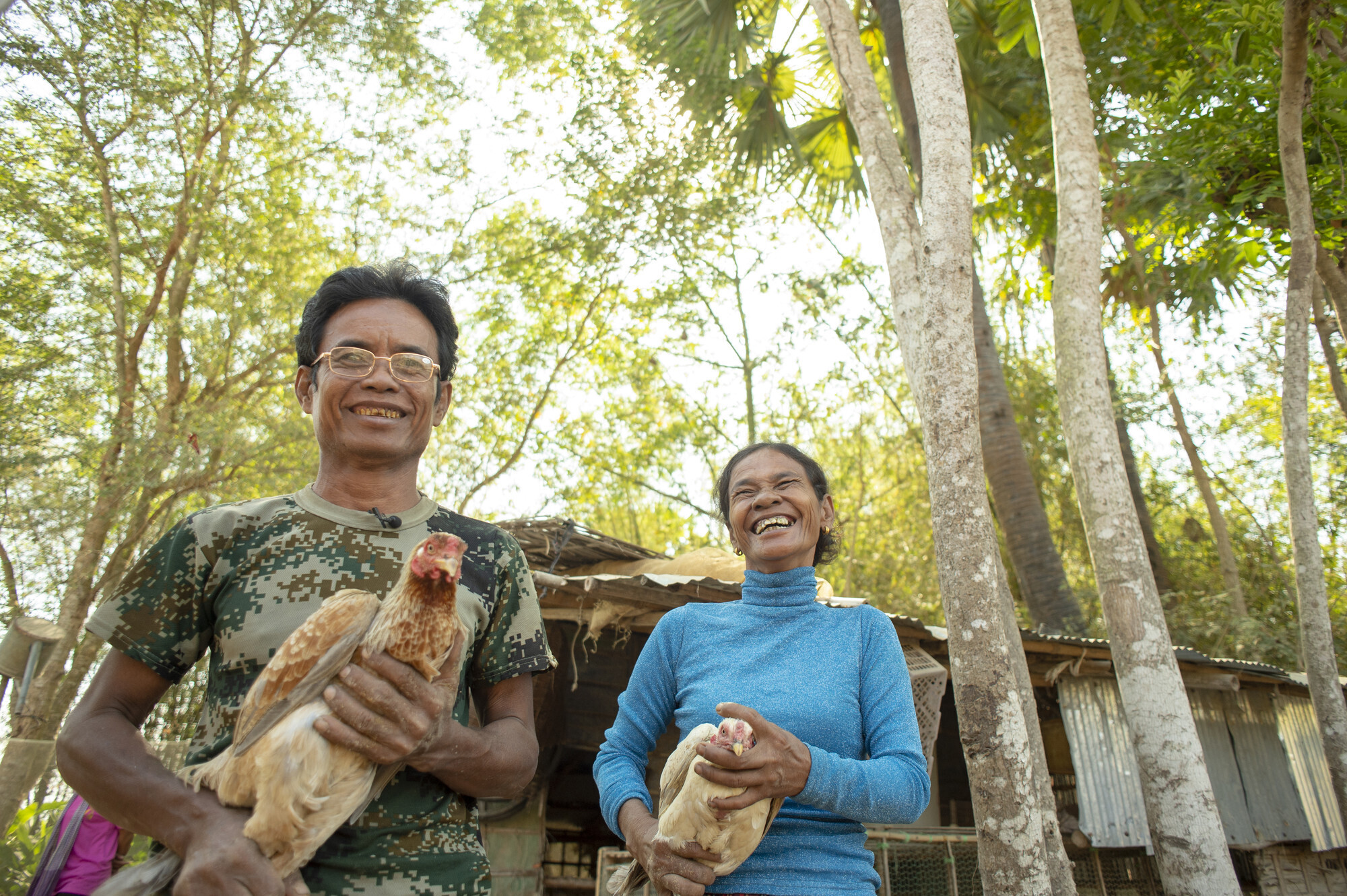
“If people want fish for today, I will catch fish for them,” he says. “If people want vegetables, I will bring vegetables to sell to them. Sometimes people want chickens. So I will sell the chicken. These three relate very well together because they provide a daily income.”
*In Cambodia, family names like Chun are written before given names.
